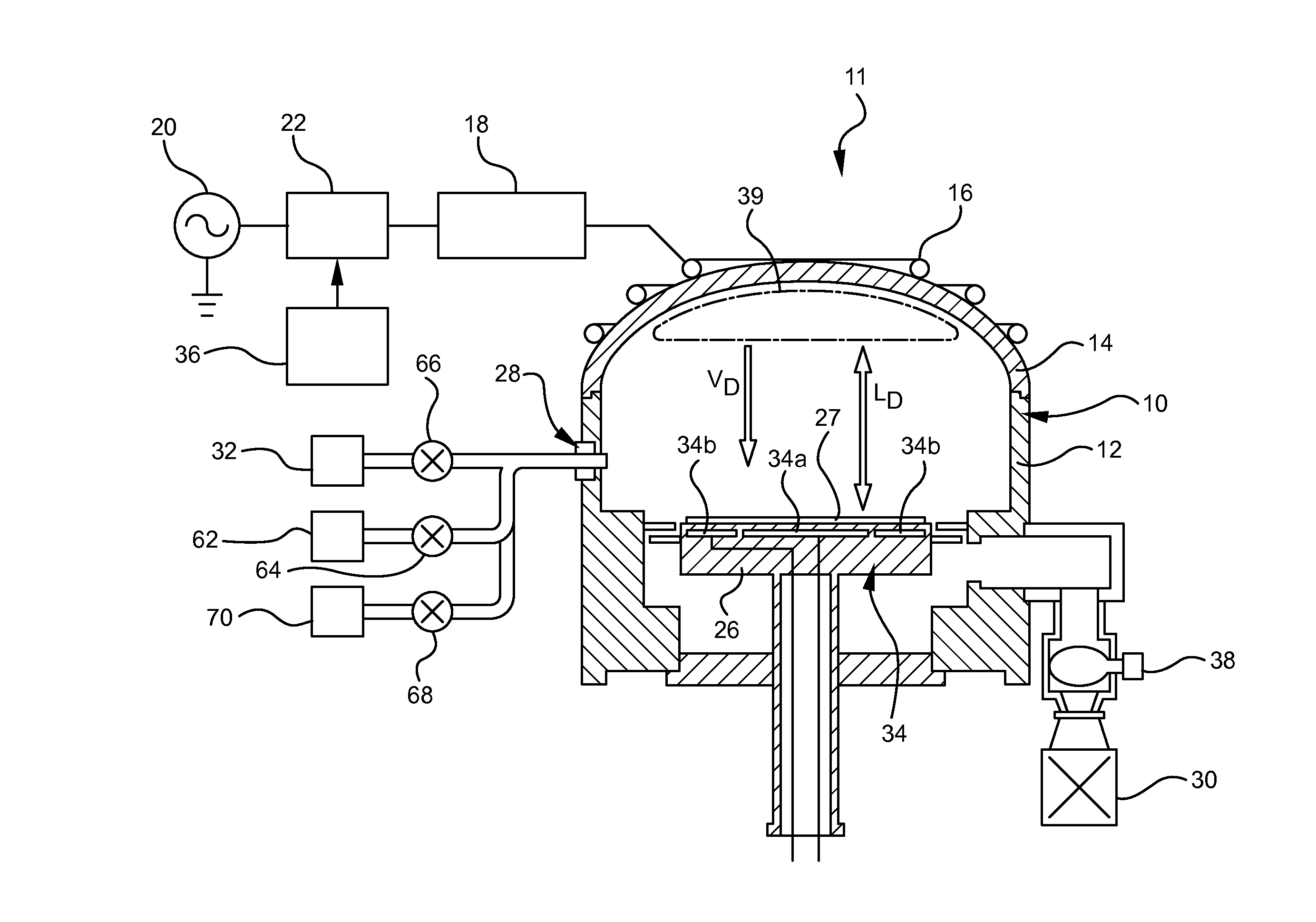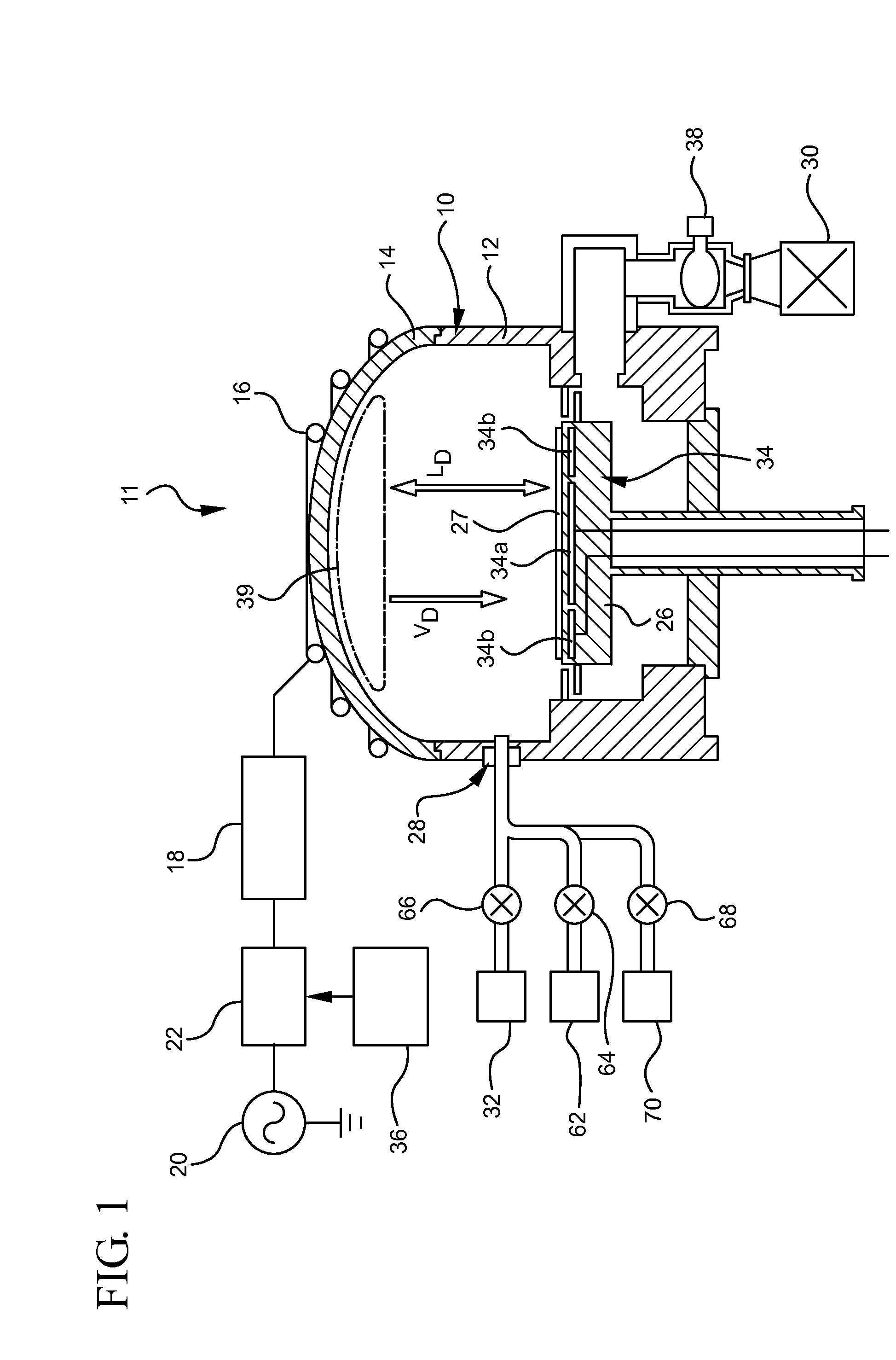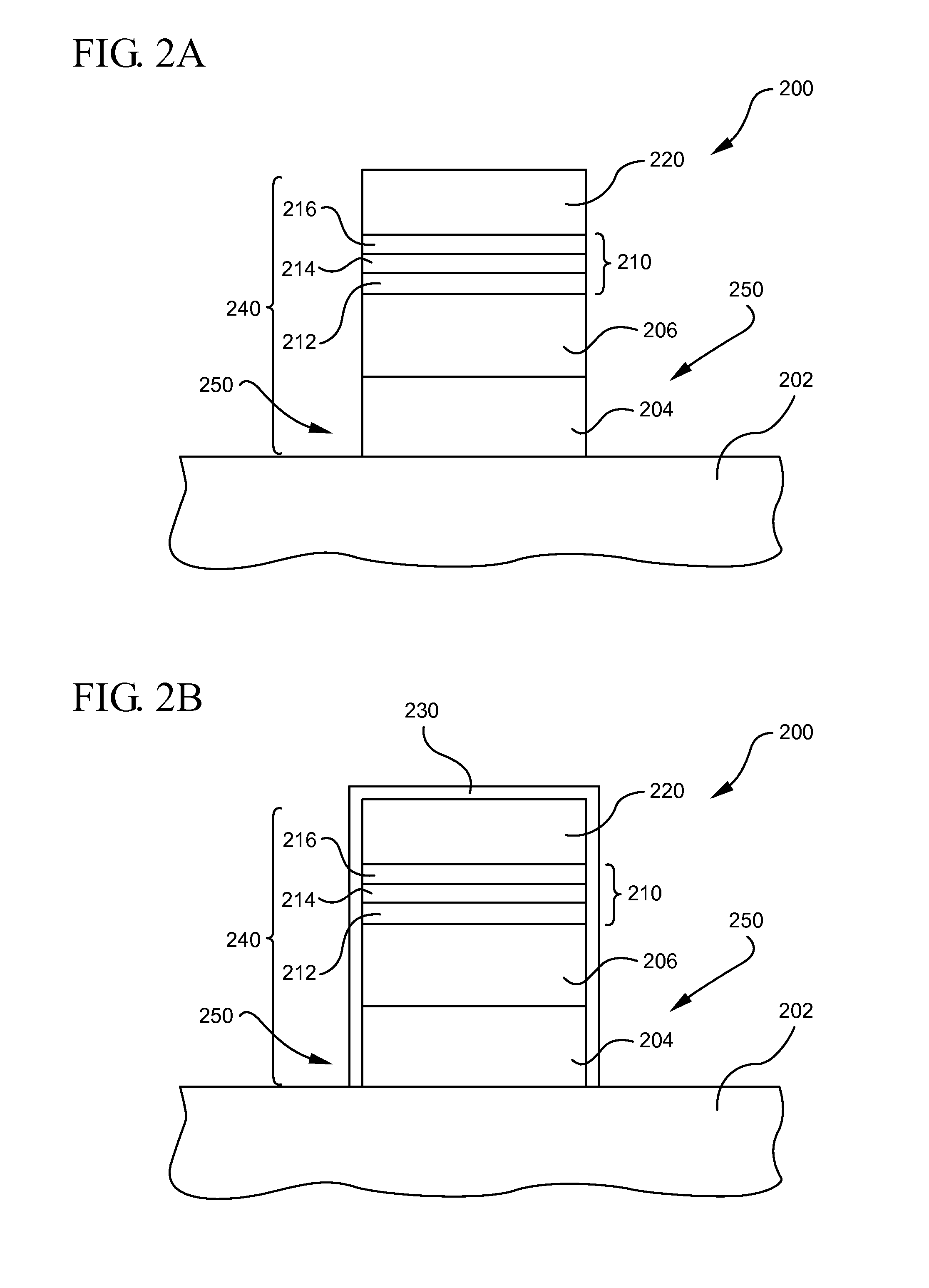Methods for forming conformal oxide layers on semiconductor devices
a technology of conformal oxide and semiconductor devices, applied in semiconductor devices, electrical equipment, electric discharge tubes, etc., can solve the problems of poor device performance or failure, high wafer or substrate temperature required in thermal oxidation process, and silicon wafer dopants, etc., to increase the sticking coefficient of oxygen species
- Summary
- Abstract
- Description
- Claims
- Application Information
AI Technical Summary
Benefits of technology
Problems solved by technology
Method used
Image
Examples
Embodiment Construction
[0022]Embodiments of the present invention provide methods for forming conformal oxide layers by oxidation of semiconductor substrates. Specific embodiments described below are described with reference to oxide layers formed by low temperature oxidation.
[0023]As used herein, low temperature oxidation refers to oxidation at temperatures below about 700° C. Conventional plasma oxidation occurs at temperatures above 100° C. due to plasma power transferred to the substrate. At temperatures above 100° C., oxygen ion flux dominates the oxidation process and thus, only half of the oxidation flux arrives at vertical sidewalls, compared the oxidation flux that arrives on horizontal walls (which may also be referred to as top and bottom surfaces or gates and trenches) of structures having a width of 50 nm. Accordingly, where conformality is defined as the ratio of the growth on a sidewall and the growth on a top or bottom surface, conventional plasma oxidation achieves only a 50% conformality...
PUM
 Login to View More
Login to View More Abstract
Description
Claims
Application Information
 Login to View More
Login to View More - R&D
- Intellectual Property
- Life Sciences
- Materials
- Tech Scout
- Unparalleled Data Quality
- Higher Quality Content
- 60% Fewer Hallucinations
Browse by: Latest US Patents, China's latest patents, Technical Efficacy Thesaurus, Application Domain, Technology Topic, Popular Technical Reports.
© 2025 PatSnap. All rights reserved.Legal|Privacy policy|Modern Slavery Act Transparency Statement|Sitemap|About US| Contact US: help@patsnap.com



